Home lifts have become increasingly popular, so ensuring their safety and knowing the home lift rules becomes really important.
Home lifts provide convenience and accessibility, especially for individuals with mobility challenges which is one of the best benefits of the home lifts.
However, like any complex machinery, they require careful adherence to safety guidelines and regulations that are the home lift rules to function correctly and safely. From proper installation to regular maintenance and compliance with local codes, understanding the essential safety measures can prevent accidents and enhance the longevity of your home lift.
So without wasting your time let’s cover up the key home lift rules, offering practical advice on how to maintain a secure and efficient home elevator system. Whether you’re considering installing a home lift or already have one, these guidelines will help you anyway by ensuring the safety and reliability of this valuable addition to your home.
What are the Key Home Lift Rules?
Before beginning to ensure the safety and reliability of your home lifts it’s really important to understand and adhere to the key regulations. So, here are the primary home lift rules that you need to follow:
Installation Standards:
– Code Compliance:
You have to make sure that your home lift must comply with local building codes and standards. This will make sure that you follow the home lift rules. For instance, In the United States, this typically means adhering to the ASME A17.1 Safety Code for Elevators and Escalators. These codes dictate the design, installation, and maintenance requirements to ensure safety.
– Professional Installation:
If you really want to have a lift in your house on which you can rely and trust by heart then it is highly recommended that you always have your home lift installed by licensed professionals. Because they possess the necessary expertise to ensure the lift is installed correctly and meets all regulatory standards. This will help you to use the lift freely without any concern or fear in your mind.
Safety Features:
– Emergency Alarms and Phones:
Home lift rules ensure you are prepared for any accidents or emergencies. Your home lifts must be equipped with an emergency alarm system and a phone or intercom that connects directly to emergency services or a monitoring service. This is crucial for user safety in the event of an emergency.
– Door Interlocks:
To avoid any unfortunate incident the lift doors should have interlocks that will prevent the elevator from moving unless the doors are completely closed and securely locked. This reduces the risk of accidents like opening doors while traveling the lift.
– Backup Power:
A lot of the time people get stuck in the lift because of the power outage. So, it will be better to have a reliable backup power source that will ensure the lift is safely operated or lowered to the nearest floor during a power outage.
Regular Inspections:
– Annual Inspections:
Under the home lift rules it is highly recommended that conducting regular inspections by certified elevator inspectors is crucial. These inspections help identify and address any wear and tear, mechanical issues, or safety feature malfunctions. It also helps the user to utilize the lift regularly without any malfunctions.
– Maintenance Records:
Keeping detailed records of all inspections, maintenance, and repairs is vital. This not only ensures compliance but also helps track the lift’s condition and performance over time.
Adhering to these key home lift rules ensures the safety and efficiency of your elevator, protecting all users and extending the lifespan of the lift. Regular maintenance and professional oversight are critical components of a safe home elevator system.

What is ASME A17.1?
Don’t know about the ASME A17.1 or never heard about it, so why not know about it to guarantee your safety?
It’s nothing but a Safety Code for Elevators and Escalators, which are being developed by the American Society of Mechanical Engineers (ASME).
This comprehensive set of standards governs the design, construction, installation, operation, inspection, testing, maintenance, alteration, and repair of elevators, escalators, and related equipment.
A lot of things right?? Then let’s break them down into points and know the important ones only.
Here’s how ASME A17.1 ensures safety by following the home lift rules:
Safety Standards:
ASME A17.1 outlines specific safety features that home lifts must have, including emergency alarms, communication systems, and door interlocks which we have already discussed briefly in the above part of the blog. These features are designed to protect users from accidents and ensure safe operation.
Design and Installation:
The code provides detailed guidelines on the design and installation of home lifts. This includes specifications for materials, construction methods, and installation procedures to ensure that lifts are following the home lift rules and guarantee safety.
Maintenance and Inspections:
ASME A17.1 sets forth requirements for regular maintenance and inspections. These guidelines help ensure that home lifts remain in good working condition and that any potential issues are identified and addressed promptly.
Compliance and Certification:
Adhering to ASME A17.1 is often a legal requirement in many regions. Compliance with this code ensures that your home lift meets the highest safety standards and can be certified by local authorities.
Understanding home lift rules and following the ASME A17.1 is crucial for anyone who owns or is considering installing a home lift. It not only helps in ensuring the safety and reliability of the elevator but also ensures that it complies with local regulations and standards.
To know more about the ASME A17.1 click here.
What are the Common Safety Guidelines for Home Lifts?
We got to know all about the key home lift rules and the ASME A17.1 but what are the common rules for home lifts?
Here we have provided you with some common safety guidelines that you should follow:
Weight Limits:
Always adhere to the specified weight limits for your home lift. Overloading can strain the system and cause mechanical failures, leading to safety hazards.
Child Safety:
Educate children about the proper use of the elevator and also about the home lift rules. Never allow them to play in or around the lift. Make sure they understand that the lift is not a toy but an authentic thing.
Clear Signage:
Post clear operating instructions and emergency procedures inside the elevator. This ensures that all users know how to operate the lift safely and what to do in case of an emergency.
Regular Maintenance:
Schedule regular maintenance checks by certified professionals. Routine maintenance helps identify and fix issues before they become major problems, ensuring the lift operates smoothly and safely.
Emergency Preparedness:
Ensure that all users are familiar with the emergency features of the lift, including the alarm system and any communication devices. Conduct regular emergency drills to practice what to do if the lift malfunctions.
Following these home lift rules not only protects the users but also extends the lifespan of your elevator, keeping it reliable and safe for years to come.

PVE Vacuum Elevators: A Smart Choice for Home Lift Safety
When considering home lift rules and safety guidelines, it’s important to choose an elevator that meets these standards effortlessly.
PVE Vacuum Elevators are an excellent choice, combining cutting-edge technology with safety and convenience.
PVE Vacuum Elevators are designed with the highest safety standards in mind. Their unique pneumatic technology ensures smooth and reliable operation, eliminating the risks associated with traditional cable-driven systems. With built-in safety features like automatic braking and emergency lowering, PVE elevators provide peace of mind to homeowners.
In addition to safety, PVE elevators are easy to install and maintain. They require minimal space and no pre-construction shaft, making them ideal for various home designs. This simplicity not only adheres to home lift rules but also reduces installation time and costs.
Regular maintenance is straightforward with PVE elevators, thanks to their transparent design and accessible components. Routine checks ensure everything runs smoothly, keeping your elevator safe and efficient for years to come.
Choosing a PVE Vacuum Elevator means adhering to home lift rules while enjoying state-of-the-art technology and design.
Enhance your home’s accessibility and safety with a PVE elevator—where modern innovation meets reliable performance.
Learn More About Home Lift Rules
For detailed information on home lift rules and regulations, visit:
-ASME A17.1 Safety Code: https://www.asme.org/resources/a17-elevators-and-escalators
-National Elevator Industry, Inc. (NEII):https://nationalelevatorindustry.org/
-International Code Council (ICC): https://www.iccsafe.org/
Stay informed and ensure your home lift meets safety standards!
Conclusion
Understanding and adhering to home lift rules is essential for ensuring the safety and reliability of your home elevator. By following key regulations, such as those outlined in ASME A17.1, and implementing regular maintenance and safety practices, you can protect all users and enhance the lifespan of your lift. Choosing high-quality elevators like PVE Vacuum Elevators further ensures compliance and offers peace of mind with advanced safety features.
Stay informed, follow the rules, and enjoy the convenience and accessibility that a home lift brings to your life.
Discover how PVE Vacuum Elevators can enhance your home. Visit our blog for more details.
Upgrade your home with safety and style now! Contact us today.
FAQs
Q: Are home elevators safe?
A: Yes, home elevators are safe when installed and maintained according to home lift rules. Following safety guidelines, regular inspections, and adhering to standards like ASME A17.1 ensure safe and reliable operation.
Q: What are the essential home lift rules I need to follow?
A: Ensuring compliance with local building codes, regular maintenance, weight limits, and child safety measures are some of the key home lift rules.
Q: Why is ASME A17.1 important for home lifts?
A: ASME A17.1 sets the safety standards for the design, installation, and maintenance of home lifts, ensuring they operate safely and reliably.
Q: How often should I have my home lift inspected?
A: Home lifts should be inspected annually by a certified elevator inspector to ensure all safety features and components are functioning correctly.
Q: Can I install a home lift myself?
A: No, it is essential to have a licensed professional install your home lift to ensure it meets all safety standards and regulations.
Q: How can I ensure my home lift complies with all regulations?
A: Regularly review local building codes, follow ASME A17.1 guidelines, and schedule routine maintenance checks by certified professionals.
Q: Are PVE Vacuum Elevators compliant with home lift rules?
A: Yes, PVE Vacuum Elevators are designed to meet the highest safety standards and are compliant with key regulations such as ASME A17.1.








